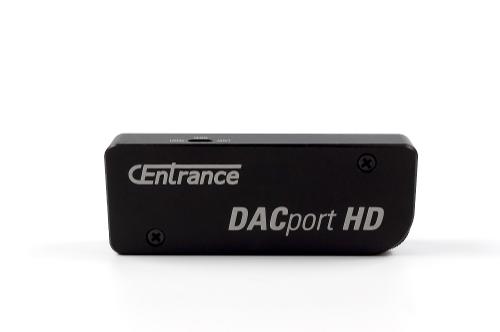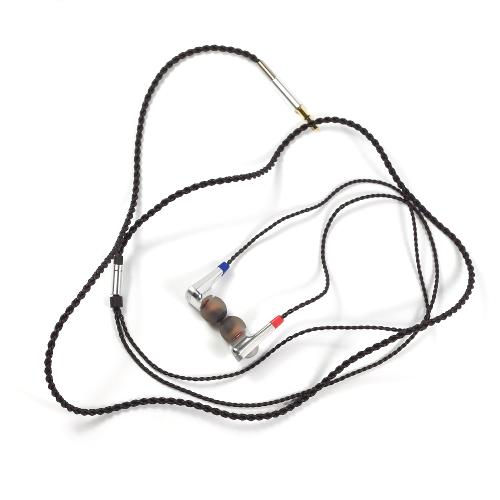Usually, I'm really skeptical about headphone cables and all related stuff. When we hear the noticeable difference, it's often caused whether by the build quality or by impedance/capacity. But new Meze's cables proved their usefulness.
First of all, I'd like to thank Meze for providing me a cable in exchange for my honest, unbiased opinion.
I'm sure, every visitor of this site knows about great 99 Classics and 99 Neo headphones, built by Meze. Combining sound quality, build, look and affordable price, those models became real bestsellers. Of course, creating replacement cable for this model, Meze tried to do their best. They've selected really expensive cables, high-quality connectors and made a really great solution.
Balanced cables for 99 series of their headphones exists in two versions: copper one ($150), and silver-plated copper ($200), for review I've got the second one.
The cable comes in the nice tin box, packaged in the plastic bag. With it, you'll get 3.5 mm angled adapter to use with single-ended sources. Connectors are protected with plastic caps and special protective grids.
Length of this wire is 1.5 m, in my opinion, it's the perfect length to use both in portable and stationary setup. Cable looks really fancy, braiding quality is superb, strain reliefs present, wherever it's necessary. Splitter is done with heat-shrink with Meze's logo. Cable is soft, has almost zero microphonics and doesn't get hard when it's cold. So, both esthetically and usability-wise, this is the perfect product.
Meze uses regular 3.5 mm connectors in cups, so cable installation is really simple and fast.
To tell the difference in comparison with the stock cable, I've used the 3.5 mm adapter in order to level possible difference between balanced and single-ended outputs of DAP. I've used Lotoo Paw Gold and A&K AK320 as a reference source. I've done a series of blind tests, using stock cable and this silver-plated cable. Also, I've done a series of blind comparisons with DIY balanced cable I've built. For this comparisons, I've used A&K AK320 and iBasso's DX200 with AMP3. I've used both 99 Neo and 99 Classics for comparisons.
Probably, you won't be surprised to know, that difference is here, and it's clearly noticeable. This silver-plated cable makes lows deeper and more punchy, actually, with this cable, 99's became one of the most "deep-bassed" headphones I've tested. Of course, lows here can't be compared with good speakers and/or subwoofers, but they are pretty close to the physical limit of headphones. Also, there was tiny difference in mids emotions, but it's really small, I can't surely find it in any blind tests. Trebles improve a little bit too, they have better attacks and decays, the difference isn't huge, but this time it's definitely noticeable in A/B testing.
So, actually, it's a really good cable, with one drawback, it's price. Meze tried to use best possible materials, which are expensive themselves, so they actually don't have a huge margin here.
To conclude, if you're looking for cable upgrade for 99 series of headphones and you want to improve their lows and treble, you should definitely consider Meze's own cable.
First of all, I'd like to thank Meze for providing me a cable in exchange for my honest, unbiased opinion.
I'm sure, every visitor of this site knows about great 99 Classics and 99 Neo headphones, built by Meze. Combining sound quality, build, look and affordable price, those models became real bestsellers. Of course, creating replacement cable for this model, Meze tried to do their best. They've selected really expensive cables, high-quality connectors and made a really great solution.
Balanced cables for 99 series of their headphones exists in two versions: copper one ($150), and silver-plated copper ($200), for review I've got the second one.
The cable comes in the nice tin box, packaged in the plastic bag. With it, you'll get 3.5 mm angled adapter to use with single-ended sources. Connectors are protected with plastic caps and special protective grids.
Length of this wire is 1.5 m, in my opinion, it's the perfect length to use both in portable and stationary setup. Cable looks really fancy, braiding quality is superb, strain reliefs present, wherever it's necessary. Splitter is done with heat-shrink with Meze's logo. Cable is soft, has almost zero microphonics and doesn't get hard when it's cold. So, both esthetically and usability-wise, this is the perfect product.
Meze uses regular 3.5 mm connectors in cups, so cable installation is really simple and fast.
To tell the difference in comparison with the stock cable, I've used the 3.5 mm adapter in order to level possible difference between balanced and single-ended outputs of DAP. I've used Lotoo Paw Gold and A&K AK320 as a reference source. I've done a series of blind tests, using stock cable and this silver-plated cable. Also, I've done a series of blind comparisons with DIY balanced cable I've built. For this comparisons, I've used A&K AK320 and iBasso's DX200 with AMP3. I've used both 99 Neo and 99 Classics for comparisons.
Probably, you won't be surprised to know, that difference is here, and it's clearly noticeable. This silver-plated cable makes lows deeper and more punchy, actually, with this cable, 99's became one of the most "deep-bassed" headphones I've tested. Of course, lows here can't be compared with good speakers and/or subwoofers, but they are pretty close to the physical limit of headphones. Also, there was tiny difference in mids emotions, but it's really small, I can't surely find it in any blind tests. Trebles improve a little bit too, they have better attacks and decays, the difference isn't huge, but this time it's definitely noticeable in A/B testing.
So, actually, it's a really good cable, with one drawback, it's price. Meze tried to use best possible materials, which are expensive themselves, so they actually don't have a huge margin here.
To conclude, if you're looking for cable upgrade for 99 series of headphones and you want to improve their lows and treble, you should definitely consider Meze's own cable.















































































































































































